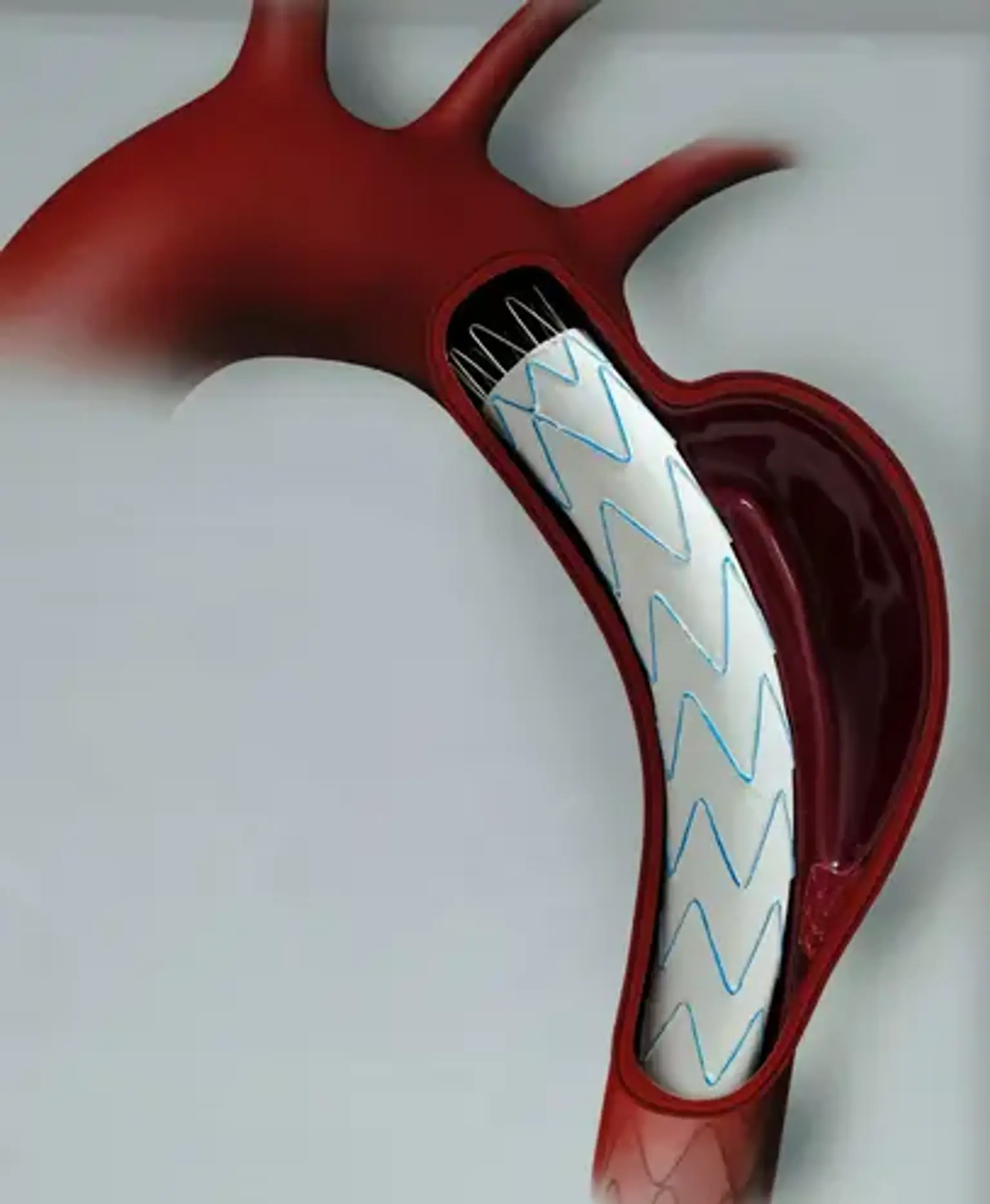Thoracic Endovascular Aortic Repair (TEVAR)
Overview
The aorta is the biggest artery in your body. It is responsible for transporting oxygen-rich blood from your heart to the rest of your body. It travels from your heart to your chest and into your stomach (abdomen). It then separates into blood vessels, which supply blood to your legs.
A weak region of the aorta may bulge out at times. This is known as an aortic aneurysm. Aortic aneurysms are dangerous because they can rupture. As the aneurysm rises in size, the danger of rupture increases. Treatment is determined on the size of the aneurysm. Treatment is also determined by how quickly the aneurysm grows.
Your healthcare provider may recommend TEVAR to fix an aneurysm in the part of the aorta that is in your chest. This is called the thoracic area.
